Jimny toolkit: options and considerations for home and away
If you’re going bush then you’ll want some way to fix your car for any minor inconveniences that occur along the way. You might also need a bit of guidance on putting together a toolkit to suit your new Jimny as you wanna modify it. I’ll make some suggestions here on a travel toolkit and also a pretty good option for the beginners who need a full toolkit; it won’t be everything but it’s enough to be able to do a fair chunk of work on the car.
Sections
Travel toolkit
I’ve gone through a few iterations of this but what I’ve landed on is using two Maxpedition skinny pouches. You’d be amazed how much fits in these.
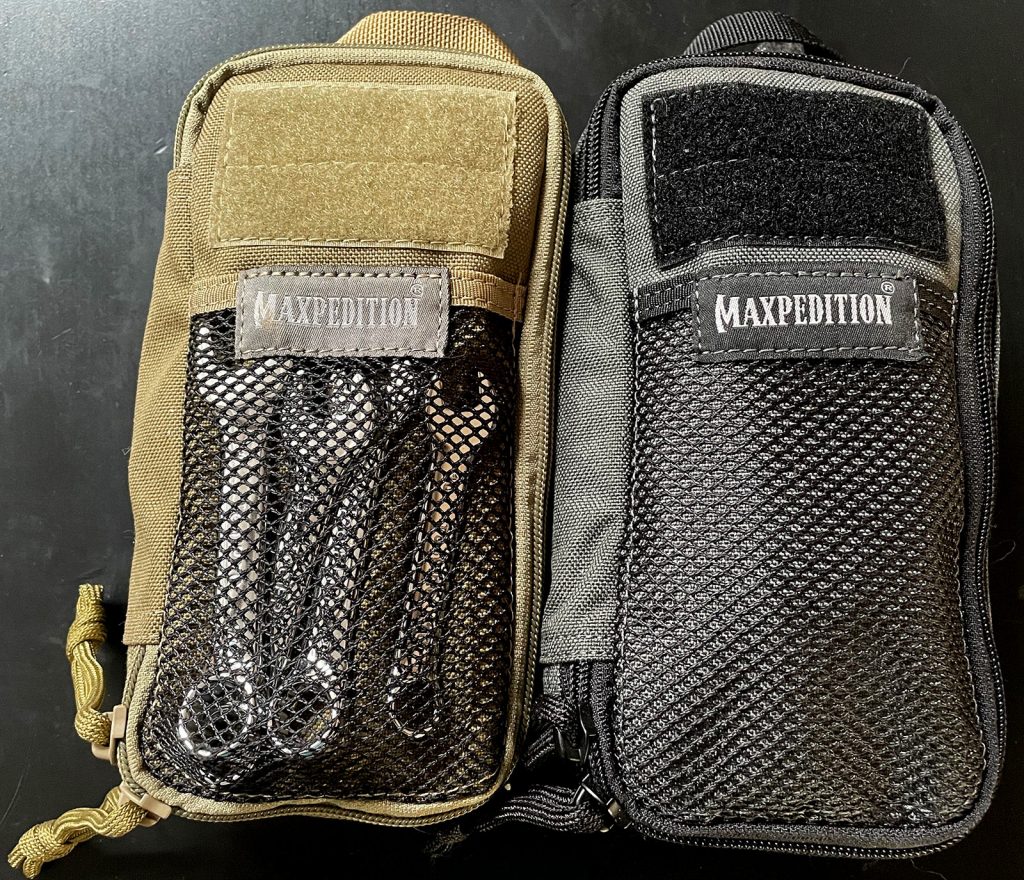
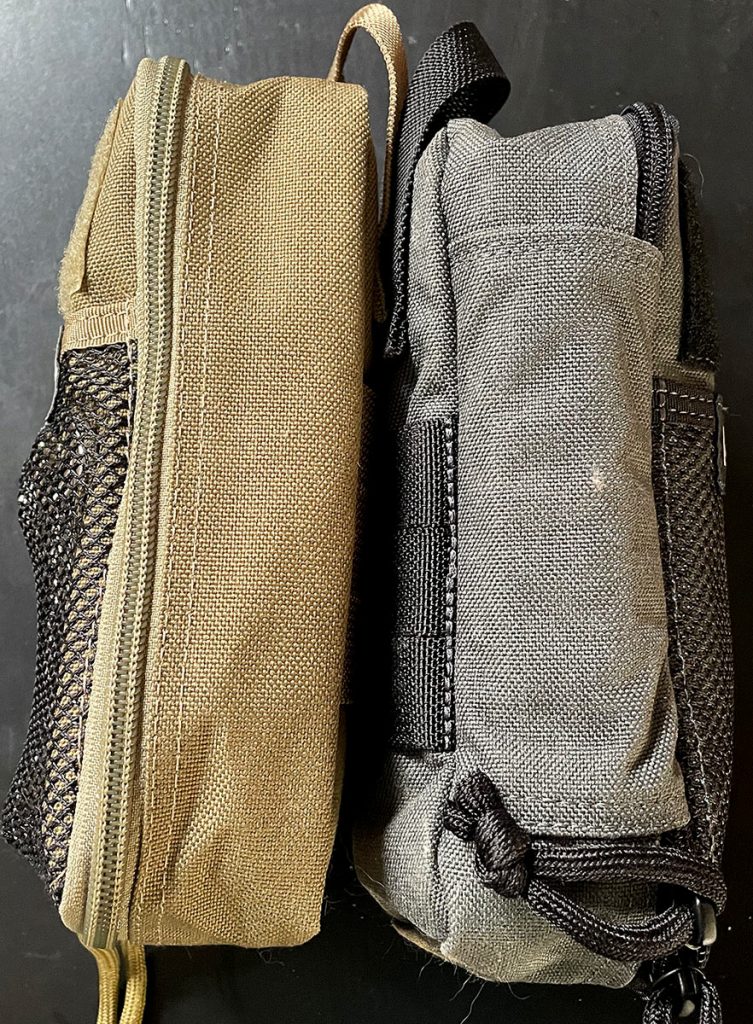
Stuff laid out & details of the contents
I’ll explain a few of the key features of the various tools I’ve chosen to help people understand what I have onboard, and also some of the compromises I’ve made and why I’m willing (or not) to accept them.
Stubby and long spanners
Spanners in a portable toolkit is a tricky one. You need to balance different sizes, lengths, and also your need for potentially open-ended spanners along with ring spanners. I’ve mixed some stubby and long spanners for this kit; alongside the sockets and various wrenches I’m pretty much covered for all of the bolts on the car. Some people try to get by with a couple of adjustable wrenches, but I’ve always preferred having some adequate spanners. For this I’ve mixed and matched a couple of metric spanner kits from Supercheap: a normal length metric set, and a stubby set.
There’s a fair bit you can do with a couple of stubby spanners especially if you do the double-up-the-spanners trick to get extra leverage. Long spanners e.g. the 19mm spanner also don’t fit in small tool bags. In some cars that’s ok, just throw it in a spanner roll, but I wanted something more dense so I have only 19mm and beyond spanners in stubby form. You then use the largest spanner(s) on the end to get extra leverage if you need.
Often though you’re just holding a nut on the back side of a bolt – for this a stubby is fine, just let it rotate till it contacts some part of the car to hold it. You’re after fixing it, not perfection here. I do double up on spanners with some extra stubbies in the front of the pouch that the spanners live in, but that helps for both quick access for common sizes (10, 12, 13, 14) and also acts to tell me which pouch has the spanners in it.
Pliers, adjustable wrench and grippers
This will probable get some contentious comments but I’ve switched over to using the smallest knipex cobra pliers (125mm) and adjustable wrench (150mm) and it’s amazing what these will lock onto with their design. These come in a 2 piece set, knipex part number 00 20 72 V01. I’ve also got the smallest pair of vise grips in here, and some knipex needle-nose pliers (wiring pliers, part number 13 01 160) which integrate some wire strippers and also crimping dies in their jaws. These all tuck into the elastic on the inside of one of the pouches.
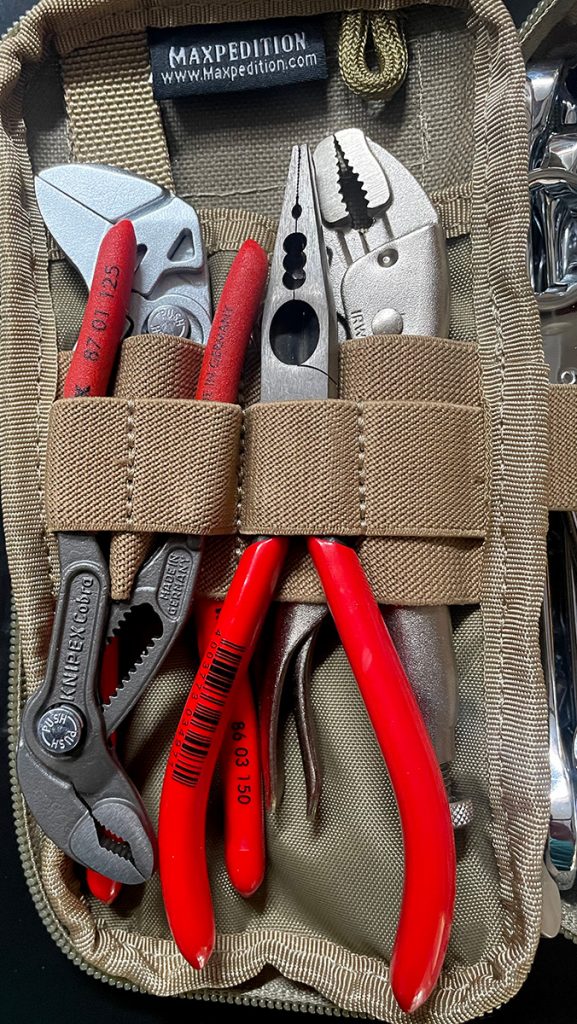
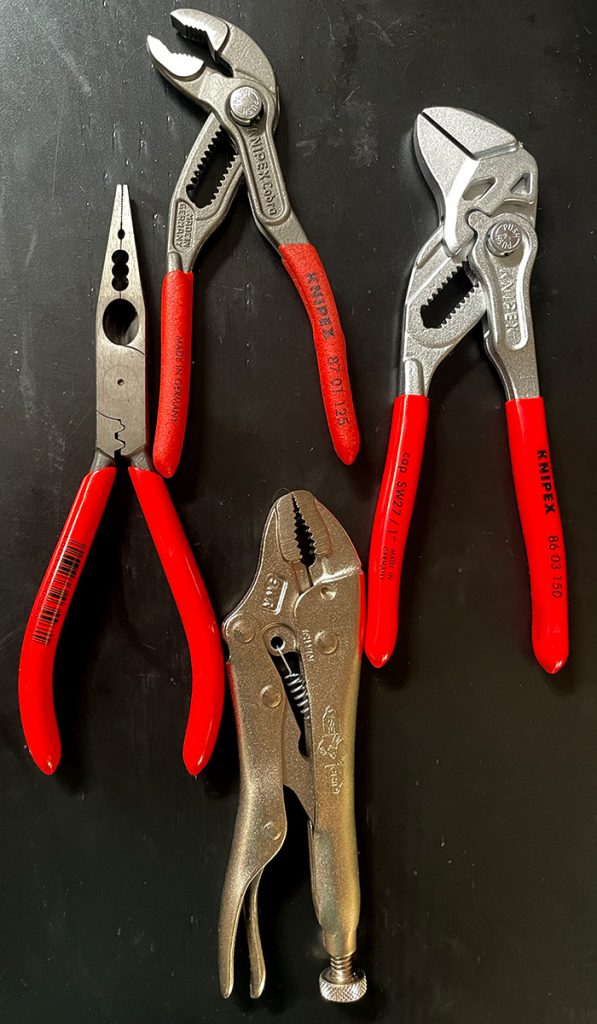
I also carry a Leatherman multitool so I have some redundancy in pliers. Despite the small size of everything here, these adjustable pliers are great and with a pipe slipped over the back you can even deal with some suspension bolts or even the locking pin on the towbar hitch. If you position your hand quite a way back on the handle you can get considerable force, or, as mentioned, use a little cheater bar to extend it right out and you’ll be amazed what it’ll do.
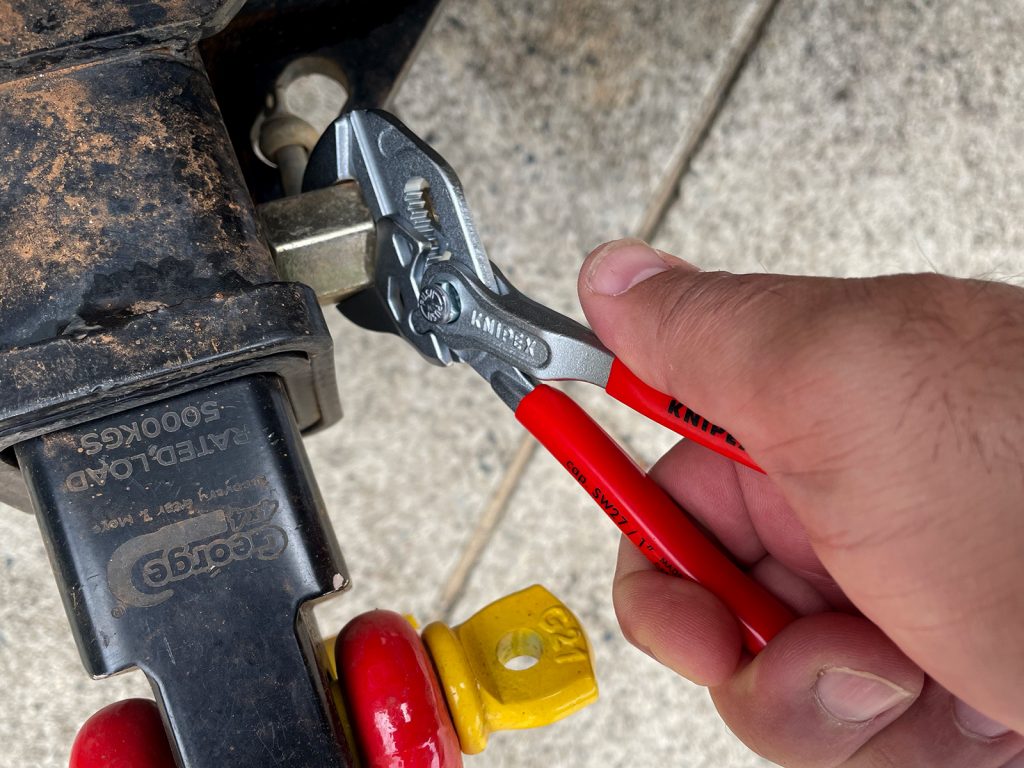
Screwdriver and associated bits
With JIS screws resembling but not replicating Phillips screws it’s important to have a good screwdriver. For this I use a Vessel ball-ended kit (the Vessel 220W-3) which comes with 3 double-ended bits.
Vessel stuff laid out
This will also drive 1/4″ hex bits, so I have added to them some allen and security torx bits. Allens are 2.5mm through 8mm; security torx T8 through T40. My window security grilles are T20, and there’s a mix of T25, T27 and T30 on the roof rack fittings; T40 also fits the seat bolts. I have a couple of extensions to drive these… and also the finest spanner ever made: a ratcheting 10mm and 1/4″ spanner. This spanner is great, not just for the redundant 10mm but also the 1/4″ drives all of these screwdriver bits as a ratchet.
All of the bits laid out
Spanner holding a bit
Sockets and ratchet
Another area that gets a bit tricky is with what to choose for a ratchet and sockets. I’ve ended up going with a 3/8″ drive ratchet for everything. I bought a cheap extendable ratchet, which I promptly dismantled by sliding the retaining collar down and flicked off the circlip. I also cut off the stupid rubber handle on the extension part and wrapped it with a couple of metres of electrical tape: this gives me both a nicer feeling grip that’s lower profile but also means I have some electrical tape with me. An M4 bolt can be used to lock the extension on if you need leverage, otherwise you have an ~8″ length handle anyway, which also features a flex head. This flex head helps fit it in the pouches.
Ratchet stuff
Socket wise I carry an 8, 10, 12, 13, 14, 15, 16 (spark plug), 17, 18, 19, 22, 24 and 32 mm socket. The latter two are special order items. I carry a 1/2″ drive breaker bar and wheel nut socket in with the jack so I also have a 1/2″ to 3/8″ drive adapter if I need heaps of leverage. The 15, 16, and 18mm sockets are really not for standard Jimny parts (save for 16mm for the spark plug) but fit some of the accessories that use these sizes.
Sockets and extensions
Multimeter
Modern cars have a lot of electronics so you’ll want something to help diagnose electronic things. I carry this mini multimeter bought from Jaycar.
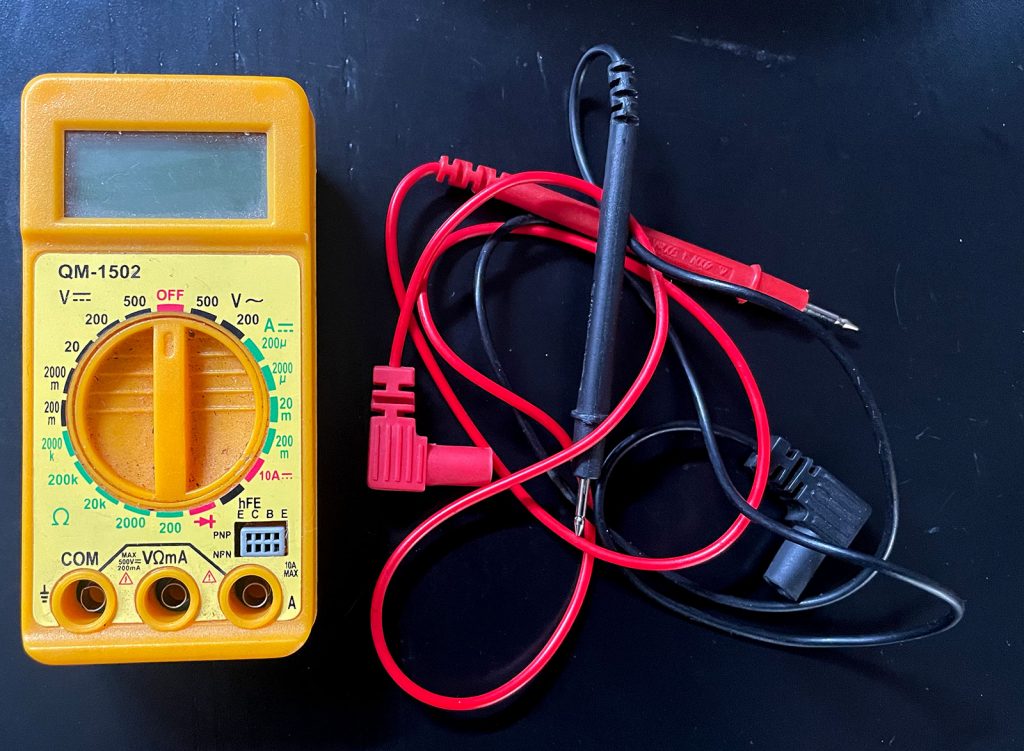
I should get some better leads or make up some better and longer ones I can latch onto an earth but this is one of the things where the vise grips come into their own: you can clamp the negative lead (or the positive) to something if you need to keep your hands free.
Shopping list
- Bags themselves
- Stubby metric spanners
- Full length metric spanners
- Vessel JIS kit
- Knipex cobra pliers and other stuff
- Mini vise grips
- Extendable ratchet (modified as per below)
- Short cable ties
- Long, thick cable ties
- Gorillatape and plastic card to wrap it around
- Trim removal tool
- Torx and allen driver bits
- Mini multimeter
Home toolkit options and opinions
It’s easy to get lost on various opinions and options for a toolkit to be able to work on your own car at home. For the last 12 months I’ve road tested what I think is a super good option for this: the Bahco S106 tool kit in blow-moulded case.
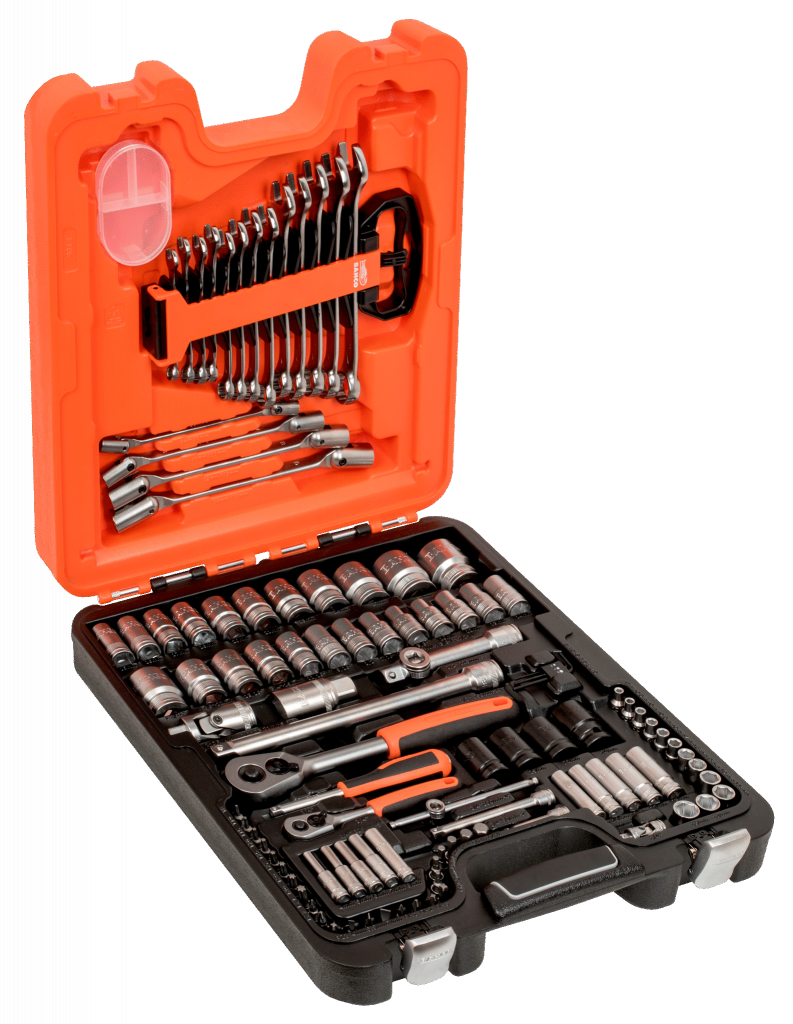
This kit comes with almost everything you need to accomplish things working on your car at home, save for a set of pliers, vise grips and also a hammer. Add those things and you’re well set.
What I like about this set is the inclusion of a few important nut sizes as socket-ended spanners. This makes it super fast doing up certain bolts where you need two spanners, but also quicker than grabbing the ratchet. Another good thing is the use of the driver bit with the 1/2″ drive extensions. You can use this to get a fair bit of leverage: click together the two extensions and then snap a socket on the driver part which will make it a pretty good length breaker bar.
This set has made an appearance in various writeups I’ve done. I’ve done a fair amount of work on the car just using this to see how it did. I also wanted to see if it’s a good travel kit: it is, though I wanted to go something more minuscule and easier to carry in my planned rear seat storage area.
If you’re going on a convoy with a few cars it would be valuable to throw in at least one of the cars, as there’s a lot of really good features to it and it’ll cover off on nearly everything you’ll need to do on most of the cars in the convoy. The case is also extremely durable. The case also makes it fit pretty well down in the rear seat footwell behind the front seats so that’s an option if you’re happy to carry it there.
Meta info: considerations and things about fasteners
The Jimny, being a Japanese car, mostly uses fasteners that adhere to the JIS standard. There’s a couple of notable things here. Firstly, screwdrivers look like phillips heads but they’re slightly different; so get a good JIS compatible screwdriver (good ones are made by brands like Vessel). Additionally, JIS uses bolt heads of the following sizes:
| Bolt | M4 | M5 | M6 | M8 | M10 | M12 | M14 | M16 |
| Hex | 7 | 8 | 10 | 12 | 14 | 17 | 19 | 22 |
Some of these are different in certain circumstances e.g. you’ll find some 13mm nuts instead of 12mm nuts if they’re self locking, or different bolt head sizes for flanged fasteners (usually smaller than the standard).
Some accessories use other bolt head sizes and you need to take this into account if you’re trying to minimise the tools you’ll take with you. Quite a lot of ARB fasteners appear to adhere to the ANSI/ISO standard (and some DIN). Notable differences here include M10, and M12 fasteners. I found 15, 16 and 18 on my bullbar fittings, and some of the bolts I found from an Ironman generic kit seemed to have 21mm heads on them.
| Bolt | M4 | M5 | M6 | M8 | M10 | M12 | M14 | M16 |
| ISO | 7 | 8 | 10 | 13 | 15/16 | 18 | 21 | 24 |
| DIN | 7 | 8 | 10 | 13 | 17 | 19 | 22 | 24 |
If you’ve got a roof rack with associated accessories then you should also consider the appropriate bit sizes with them. Plenty use allens or torx, but sometimes they are security bits and sometimes not, and sometimes they are imperial and sometimes metric depending on where you sourced them. A classic example would be rotopax mounts: they are imperial bolts. Rhino use slightly smaller than standard security torx bits to make it a little harder to steal the racks although I swapped them for a more standard size to minimise on tools I had to carry.
Other specialty tools
There’s only a few really dedicated specialty tools that are worth thinking about for the Jimny. The A/C drive belt is a tensioner-free stretch belt and having some removal and refitting tools is a godsend to get this belt off. If you need to service the alternator then the workshop manual suggests you need to get this belt off first before getting the alternator/water pump drive belt off, so it’s very little weight for a huge benefit if you need to do something to the charging system or waterpump in the outback. Even if you don’t use them then a workshop you end up at in the outback has them out of your spares kit.
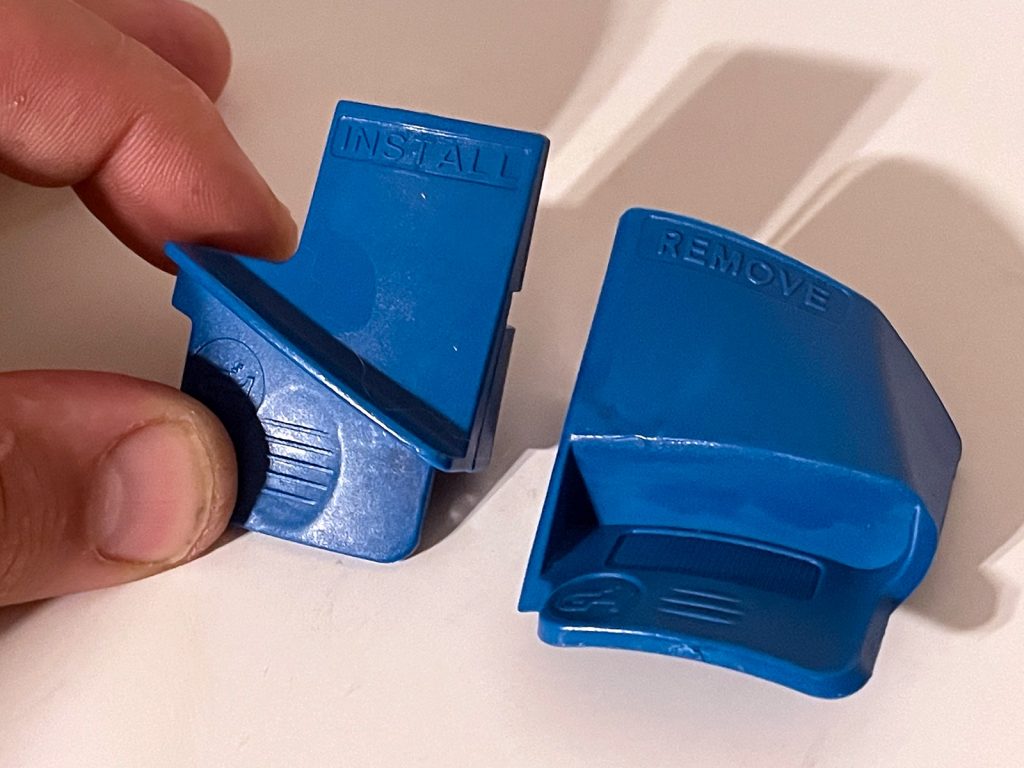
The other thing to consider would be the appropriate socket to match the front hub retaining ring. Again you can get by and you might not even be the person using this… but the workshop in the middle of nowhere helping you out of a bind with the front hubs will appreciate it. There is a circlip that fits in front of this so circlip pliers are also useful for this but in a pinch screwdrivers and pliers and a lot of effort can work.
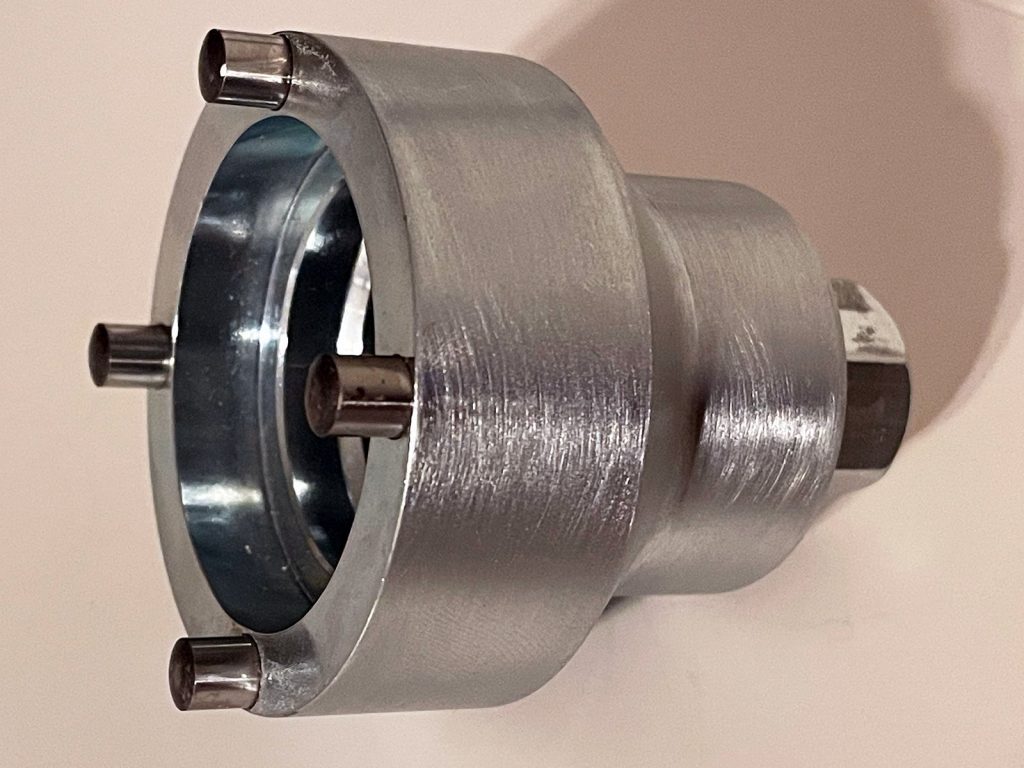
If you want or need to get the hubs apart then you also need an external torx (size 10) socket to get the fasteners off here.
It’s very much worthwhile having a dedicated large breaker bar and socket to match the wheel nuts. This is doubly useful as the wheel nuts also are the same size as some of the suspension bolts, so you’re prepared if you need to do something up on the suspension. The front hub tool I have
Something else that’s worth considering is an oil filter socket. The Jimny’s oil filter is really tight and hard to access, and it has been designed with a particular oil filter socket in mind: the Suzuki part number 09915–47341, which is superseeded by 09915-40611, which then is listed against a number of motorbikes – primary one that’s easiest to search for is 2001-2020 GSX-R1000 motorbikes. Ryco list a filter tool as RST202, which is a 67mm diameter, 14 flute socket.
The final thing to consider would be some form of OBD-II reader. Even just a bluetooth one and an app on your phone to scan codes is useful, but I generally carry a larger scan tool for redunancy. I’ll probably seek out a smaller one but I do like having one that has the ability to scan not just the engine module but also the ESP/ABS and airbag modules which a lot of smaller and more generic ones cannot do.
Spares?
I think spares kind of fit into toolkits, at least in terms of the thinking about your toolkit you’re taking. There isn’t a whole hell of a lot I would bother carrying but a good consideration would be alternator parts if you’re doing a long offroad trip involving significant mud. The Jimny isn’t the only modern 4wd to suffer from issues around mud and alternators, and you can get spares pretty readily. While it’s possible to get spares via the Suzuki dealership, an easier source is to find an alternator off a K12C engine, which were used in some 1.2L Swifts and Ignis’ from ~2015 onwards. The part number you’re looking for is 31400-81P00, which is the same as the Jimny’s alternator.
If shopping for individual spare parts other than the entire assembly:
- Front bearing is 31582-58J20
- Rotor and rear bearing is 31710-81P00
- Brush holder is 31656-61J20
- Front nut is 31775B86510N
I’ll do a separate teardown on this but it’s worth taking the rotor, the brushes and the front bearing out of the case if you want to have the ability to rebuild an alternator on the side of the track.
I’d also recommend carrying a few random sized small bolts. You should definitely have some M6 and M8 bolts of a few lengths – but when in doubt err on the side of slightly too long with more thread if possible. You can always cut them down (slowly, admittedly) with the small hacksaw blade part out of your toolkit or you might well be able to leave them long. It’s hard to add length to a bolt that’s too short though.
When it comes to specific bolts it might be worth thinking about shock and panhard rod bolts. They seem to work loose pretty often for people who’ve done suspension lifts, and a spare might not go astray if you’re doing a super long and tough track over multiple days. I’d also recommend in those situations doing a bolt check every night at camp anyway and making sure everything’s good and tight before you settle in for the evening. No-one likes doing bolt checks at the start of the day; they just want to get up and going.
Another spare often overlooked is a spare spark plug. The spark plug as standard is an NGK KR6A-10 spark plug; not everywhere carries them but they are available. These spark plugs take a 16mm socket: for this I use a Motion Pro spark plug socket and swivel extension. Both of these are able to be driven by other spanners, ratchets or even jamming a screwdriver through them and twisting it like a t-handle.
To go with the spark plug it’s sensible to at least carry a single coil with modern cars. These aren’t things you’ll easily find in a small outback town and can make the journey home a little more tolerable if you end up with a misfiring coil. Part number is 33400-78R00 for the OEM coils.
Set of filters, including fuel filter is something useful to have handy if you’re doing a super long journey (say across continents or similar). If nothing else it saves you finding a Suzuki dealer at the other end to be able to service it fully.
Air filter: 13780-78R00
Oil filter: 16510-73002L000 (Ryco Z443)
Cabin filter: 95860-74P00
Fuel pump assembly is 15100-78R00
